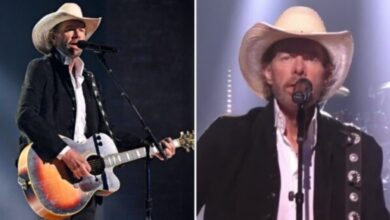Mungo Jerry’s “In the Summertime” Captures the Carefree Spirit of a Generation and Redefines Pop in 1970
When Mungo Jerry released “In the Summertime” in May 1970, the world didn’t just hear a new summer anthem—it heard a song that would become the unofficial soundtrack of leisure, freedom, and sun-drenched youth for decades to come. Blending skiffle, jug band blues, and rock with irresistible rhythmic bounce, the single exploded onto the charts, reaching No. 1 in the UK, Australia, and 23 other countries, while peaking at No. 3 on the US Billboard Hot 100. It was more than a hit; it was a movement in itself—spontaneous, joyous, and free of pretension.
Mungo Jerry was the brainchild of Ray Dorset, an English musician with a fascination for vintage American roots music. Formed in 1969, the group was a deliberate throwback to the skiffle era of the 1950s, using washboards, upright bass, and foot-stomping rhythms at a time when psychedelic rock and progressive sounds dominated the airwaves. Dorset’s gravelly voice and magnetic grin made him a natural frontman, and his vision of combining feel-good lyrics with rustic instrumentation set Mungo Jerry apart in a crowded musical landscape.
“In the Summertime” was penned in just ten minutes by Dorset during a break from his day job at Timex, but its casual composition belied the universal appeal it held. The lyrics were light, even cheeky—celebrating the lazy days of summer, flirtation, and fast cars, wrapped in a breezy, carefree charm. It wasn’t about political statements or cultural revolutions; it was about rolling down the windows and feeling the warmth of the sun on your face, no matter where you came from.
The recording of the track was just as unorthodox as its sound. It featured no electric instruments—just Ray Dorset’s acoustic guitar, a double bass, a snare drum, and a piano. The most memorable element, however, was Paul King’s kazoo solo, which gave the song a distinctive quirk that remains instantly recognizable. Producer Barry Murray kept the arrangement raw and unfiltered, capturing a spontaneous jam-session energy that mirrored the song’s lyrical message.
The song’s success was meteoric. In the UK, it sold over six million copies, spending seven weeks at No. 1 on the UK Singles Chart and earning a gold disc in the US. For a band with a debut single, such success was unprecedented. It became one of the fastest-selling singles of the era, with record shops struggling to keep up with demand. Mungo Jerry had arrived, and with them, summer had a new anthem.
“In the Summertime” hit during a cultural pivot point. The heavy protests and politics of the late ’60s were giving way to a lighter, more escapist mood. The song’s celebration of momentary joy, freedom, and youthful romance resonated across borders, and its global reach signaled a rare moment of unity in pop music. It wasn’t tied to a movement—it was the movement, one of celebration and release.
The massive success of the track positioned Mungo Jerry as more than just a one-hit wonder in the UK. The band quickly followed with other hits like “Baby Jump” and “Lady Rose,” and toured extensively. But “In the Summertime” remained the pillar of their identity—opening doors to festivals, international tours, and appearances on shows like Top of the Pops and Beat Club, where their raw, energetic vibe translated seamlessly to television audiences.
The song’s influence reached beyond Mungo Jerry’s own discography. Its genre-blending style inspired a wave of acoustic-driven acts and encouraged artists to experiment with nontraditional pop instruments. Its blend of British skiffle and American jug band blues was a precursor to the roots revivals of later decades, echoed in acts from The Pogues to early Mumford & Sons.
“In the Summertime” has been covered and sampled dozens of times over the decades, from Bob Dylan’s impromptu live tributes to reggae and dancehall interpretations. Notably, Shaggy’s 1995 version brought the song to a new generation, fusing the original melody with reggae rhythms and scoring international success in its own right.
While the song’s carefree nature drew praise, it has also drawn scrutiny for lyrics that some have interpreted as too cavalier or outdated, particularly in its references to drinking and women. Yet, within the cultural context of its time, it reflected a kind of innocence and spontaneity that defined the early ’70s pop spirit—a snapshot of an era before cynicism crept back into mainstream music.
Even after more than 50 years, the song continues to enjoy robust seasonal radio play, particularly in Europe and Australia, where it is virtually synonymous with summer. Its percussive clap, kazoo line, and singalong chorus remain instantly familiar, making it one of the most licensed and synched songs in British pop history.
“In the Summertime” also helped pave the way for future cross-seasonal hits, proving that feel-good songs with acoustic foundations could dominate global charts without relying on studio gimmickry or elaborate production. It laid the groundwork for the acoustic-pop boom of later decades and reaffirmed the universal appeal of simplicity in music.
Though Mungo Jerry never again matched the scale of success achieved with this one single, the band’s place in music history remains secure. Ray Dorset continued to tour with new iterations of the group for decades, often closing sets with the song that made him a household name. For millions, hearing that opening guitar strum still conjures images of sunlit beaches, road trips, and youth.
“In the Summertime” endures not just as a pop hit, but as a cultural moment—an effortless celebration of joy that transcended trends. Its message remains clear and timeless: slow down, enjoy the sunshine, and live for today. And in that spirit, Mungo Jerry gave the world a song that never grows old.



